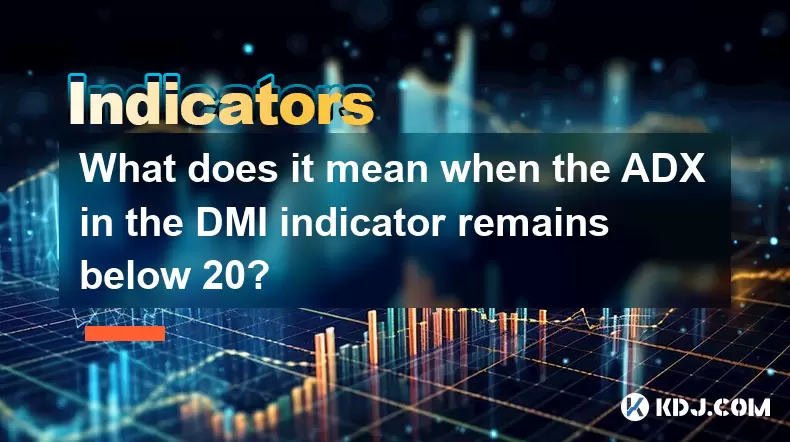-
 Bitcoin
Bitcoin $114800
-0.70% -
 Ethereum
Ethereum $4740
0.44% -
 XRP
XRP $3.018
-0.53% -
 Tether USDt
Tether USDt $0.9998
0.02% -
 BNB
BNB $863.0
-2.82% -
 Solana
Solana $205.2
1.19% -
 USDC
USDC $0.9999
0.00% -
 Dogecoin
Dogecoin $0.2303
-2.43% -
 TRON
TRON $0.3651
1.10% -
 Cardano
Cardano $0.8937
-2.19% -
 Chainlink
Chainlink $25.42
-0.96% -
 Hyperliquid
Hyperliquid $43.50
-0.67% -
 Sui
Sui $3.626
-2.57% -
 Stellar
Stellar $0.4055
-1.60% -
 Ethena USDe
Ethena USDe $1.000
0.01% -
 Bitcoin Cash
Bitcoin Cash $594.8
1.30% -
 Avalanche
Avalanche $25.04
-3.00% -
 Hedera
Hedera $0.2452
-1.68% -
 Litecoin
Litecoin $119.1
-1.96% -
 UNUS SED LEO
UNUS SED LEO $9.596
0.24% -
 Toncoin
Toncoin $3.331
-0.83% -
 Shiba Inu
Shiba Inu $0.00001277
-3.18% -
 Uniswap
Uniswap $10.94
-2.43% -
 Polkadot
Polkadot $4.044
-2.07% -
 Dai
Dai $0.0000
0.01% -
 Bitget Token
Bitget Token $4.670
-1.72% -
 Cronos
Cronos $0.1568
1.20% -
 Aave
Aave $346.1
-1.00% -
 Monero
Monero $269.5
0.15% -
 Ethena
Ethena $0.6950
-6.51%
What does it mean when the ADX in the DMI indicator remains below 20?
When ADX is below 20, the market lacks a strong trend—favor range-trading strategies and wait for ADX above 20 to confirm breakout validity. (154 characters)
Aug 11, 2025 at 09:36 pm

Understanding the DMI and ADX Components
The Directional Movement Index (DMI) is a technical analysis tool that consists of three main components: the Positive Directional Indicator (+DI), the Negative Directional Indicator (-DI), and the Average Directional Index (ADX). The +DI and -DI lines help traders identify the direction of the trend, while the ADX measures the strength of the trend, regardless of its direction. The ADX is derived from the smoothed average of the difference between +DI and -DI over a specified period, typically 14 candles.
When analyzing the ADX, values range from 0 to 100. A reading below 20 is commonly interpreted as indicating a weak trend or the absence of a clear directional movement in the price. This suggests that the market may be consolidating or moving sideways, with neither buyers nor sellers gaining significant control.
Implications of ADX Below 20
When the ADX remains below 20, it signals that the current market lacks a strong directional bias. This does not imply that price is stagnant, but rather that price movements are not sustained in one direction long enough to form a trend. In such environments, price tends to oscillate within a range, making it difficult for trend-following strategies to generate reliable signals.
Traders should be cautious when the ADX is below 20, as attempting to trade breakouts or follow momentum may result in false signals and whipsaws. For instance, if the +DI crosses above the -DI while the ADX is still under 20, this crossover may not lead to a sustained upward move. The lack of trend strength undermines the reliability of such signals.
How to Interpret Price Action with Low ADX
In a market where the ADX is consistently below 20, it is more effective to switch from trend-following strategies to range-based or mean-reversion techniques. Traders can identify support and resistance levels and look for opportunities to buy near support and sell near resistance.
- Use horizontal support and resistance zones to define entry and exit points
- Apply oscillators like the RSI or Stochastic to detect overbought or oversold conditions within the range
- Avoid placing stop-loss orders too tightly, as low ADX environments often include choppy price action that can trigger premature exits
- Monitor for volume changes, as a spike in volume may precede a breakout even when ADX is low
It’s important to understand that a low ADX does not mean low volatility. Price can still move sharply in both directions, but without sustained momentum in either direction.
Confirming Breakouts When ADX Is Below 20
Even when the ADX is below 20, price may attempt to break out of a consolidation range. However, such breakouts are more likely to fail unless confirmed by additional factors. Traders should not rely solely on price breaking a level; they must seek confirmation from other indicators and market structure.
- Wait for the ADX to rise above 20 after a breakout, which confirms increasing trend strength
- Look for a concurrent crossover of +DI and -DI that aligns with the breakout direction
- Confirm with candlestick patterns, such as bullish engulfing or bearish engulfing, at key levels
- Check for increased trading volume during the breakout, which adds credibility to the move
For example, if price breaks above resistance and the ADX begins to climb from 18 to 22 while the +DI crosses above the -DI, this combination increases the probability that the breakout is valid.
Setting Up and Reading the DMI Indicator
To properly assess when the ADX is below 20, correct configuration of the DMI on your trading platform is essential. Most platforms, including TradingView, MetaTrader, and ThinkOrSwim, include the DMI indicator in their default studies.
- Open your charting platform and search for “DMI” or “Average Directional Index”
- Apply the indicator to the chart; it will automatically plot the +DI, -DI, and ADX lines
- Ensure the period setting is set to 14, unless you have a specific reason to adjust it
- Observe the ADX line independently—focus on whether it is above or below the 20 threshold
- Customize the colors for clarity: for instance, set ADX to red when below 20 and green when above
Some platforms allow you to add alert conditions. You can set an alert to notify you when the ADX crosses above or below 20, helping you react quickly to shifts in trend strength.
Common Misinterpretations of Low ADX
A frequent mistake is assuming that an ADX below 20 means the market is calm or inactive. In reality, price can be highly volatile even when the ADX is low. The ADX only measures trend strength, not volatility. A sideways market with wide swings between highs and lows can still register a low ADX because there is no consistent directional movement.
Another misconception is that a rising ADX from below 20 automatically signals a new trend. While it may indicate strengthening momentum, the direction must be confirmed by the relationship between +DI and -DI. If the -DI is above the +DI as ADX rises, the emerging trend is likely bearish, not bullish.
Frequently Asked Questions
Can the ADX stay below 20 for a long time?
Yes, the ADX can remain below 20 for extended periods, especially in markets that are range-bound or lacking strong fundamental drivers. This is common in cryptocurrency markets during low-activity periods, such as holidays or between major news events. Prolonged ADX readings under 20 suggest persistent indecision among traders.
Does a low ADX affect all timeframes equally?
No, the interpretation of ADX depends on the timeframe. On lower timeframes like 5-minute or 15-minute charts, ADX often stays below 20 due to market noise. On higher timeframes like daily or weekly, a sub-20 ADX carries more significance, indicating a broader lack of trend across longer investment horizons.
Should I ignore trading signals when ADX is below 20?
Not necessarily. While trend-following signals become less reliable, range-trading or reversal strategies can be effective. Crossovers between +DI and -DI may still offer value if used in conjunction with support/resistance levels and confirmation from other tools like RSI or volume.
Can ADX drop below 20 during a strong trend?
Temporarily, yes. After a strong trend, ADX may decline below 20 during a consolidation phase. This does not mean the trend is over, but rather that momentum has paused. Traders should monitor price structure and volume to determine whether the trend will resume or reverse.
Disclaimer:info@kdj.com
The information provided is not trading advice. kdj.com does not assume any responsibility for any investments made based on the information provided in this article. Cryptocurrencies are highly volatile and it is highly recommended that you invest with caution after thorough research!
If you believe that the content used on this website infringes your copyright, please contact us immediately (info@kdj.com) and we will delete it promptly.
- Crypto Crossroads: Dogecoin, Stellar, and the Search for 2025's Top Coin
- 2025-08-24 19:25:32
- Bitcoin Price Swings, BTC News & Remittix: What's Hot Now?
- 2025-08-24 18:45:35
- Cryptos, Market Cap, 2025 Potential: Spotting the Next Big Thing
- 2025-08-24 16:45:35
- Shiba Inu vs. Layer Brett: Price Prediction and the Meme Coin Evolution
- 2025-08-24 17:05:29
- Dogecoin Price Prediction: Will DOGE Bark or Bite?
- 2025-08-24 17:45:26
- XRP Price: Analyst Prediction of $7-$8 in Few Weeks?
- 2025-08-24 17:45:26
Related knowledge

What does it mean when the +DI and -DI cross frequently in the DMI indicator but the ADX is flattening?
Aug 11,2025 at 03:15am
Understanding the DMI Indicator ComponentsThe Directional Movement Index (DMI) is a technical analysis tool composed of three lines: the +DI (Positive...

What does the sudden appearance of a "dark cloud cover" candlestick pattern during an uptrend indicate?
Aug 13,2025 at 11:35am
Understanding the 'Dark Cloud Cover' Candlestick PatternThe dark cloud cover is a bearish reversal pattern in technical analysis that typically appear...

What does it mean when the moving average, MACD, and RSI all send buy signals simultaneously?
Aug 11,2025 at 01:42pm
Understanding the Convergence of Technical IndicatorsWhen the moving average, MACD, and RSI all generate buy signals at the same time, traders interpr...

What does it mean when both the KDJ indicator and the RSI show overbought signals simultaneously?
Aug 13,2025 at 11:35am
Understanding the KDJ Indicator in Cryptocurrency TradingThe KDJ indicator is a momentum oscillator derived from the Stochastic Oscillator, widely use...

What does it mean when the price is trading above the SAR indicator but the red dots are densely packed?
Aug 09,2025 at 11:49pm
Understanding the SAR Indicator and Its Visual SignalsThe SAR (Parabolic Stop and Reverse) indicator is a technical analysis tool used primarily to de...

What does it mean when the candlestick chart forms a "Morning Star" but trading volume is sluggish?
Aug 12,2025 at 06:28pm
Understanding the Morning Star Candlestick PatternThe Morning Star is a three-candle bullish reversal pattern commonly observed in cryptocurrency pric...

What does it mean when the +DI and -DI cross frequently in the DMI indicator but the ADX is flattening?
Aug 11,2025 at 03:15am
Understanding the DMI Indicator ComponentsThe Directional Movement Index (DMI) is a technical analysis tool composed of three lines: the +DI (Positive...

What does the sudden appearance of a "dark cloud cover" candlestick pattern during an uptrend indicate?
Aug 13,2025 at 11:35am
Understanding the 'Dark Cloud Cover' Candlestick PatternThe dark cloud cover is a bearish reversal pattern in technical analysis that typically appear...

What does it mean when the moving average, MACD, and RSI all send buy signals simultaneously?
Aug 11,2025 at 01:42pm
Understanding the Convergence of Technical IndicatorsWhen the moving average, MACD, and RSI all generate buy signals at the same time, traders interpr...

What does it mean when both the KDJ indicator and the RSI show overbought signals simultaneously?
Aug 13,2025 at 11:35am
Understanding the KDJ Indicator in Cryptocurrency TradingThe KDJ indicator is a momentum oscillator derived from the Stochastic Oscillator, widely use...

What does it mean when the price is trading above the SAR indicator but the red dots are densely packed?
Aug 09,2025 at 11:49pm
Understanding the SAR Indicator and Its Visual SignalsThe SAR (Parabolic Stop and Reverse) indicator is a technical analysis tool used primarily to de...

What does it mean when the candlestick chart forms a "Morning Star" but trading volume is sluggish?
Aug 12,2025 at 06:28pm
Understanding the Morning Star Candlestick PatternThe Morning Star is a three-candle bullish reversal pattern commonly observed in cryptocurrency pric...
See all articles

























































































